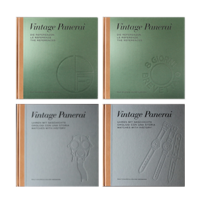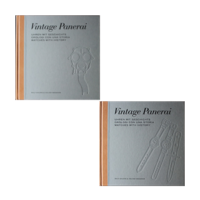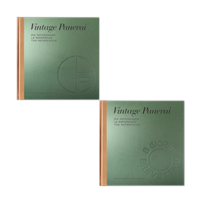“Like Men From Mars!”
by Volker on Jan.21, 2018, under Allgemein
In addition to the story published at Fellows, Revolution and wornandwound.com about the Ref. 3646 / Type C watch, which Sgt. George W. Rowson brought home from his service in the 43rd (Wessex) Reconnaissance Regiment, we have gathered some information about the attemp of twelve German “Kampfschwimmer” units (three teams of four) to attack both bridges across the river Waal at Nijmegen in the night of 28/29 September, 1944. The first team was sent to attack the railroad bridge, the second and third team to attack the road bridge.
The story of Sgt. Rowson’s “Radiomir Panerai” is matching with information on the capture of both, second and third team which failed to attack the road bridge of Nijmegen. These eight “Kampfschwimmer” units (of which one of them belonged the Ref. 3646 / Type C) were: Orlowski, Ohrdorf, Weber, Schmidt, Kolbruch, Dyck, Gebel and Halwelka (two KIA, six POW).
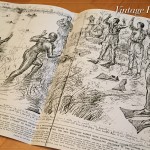 The caption of a drawing by War Artist Captain Bryan de Grineau of the British Army in Holland, to which we give our credits, published in an undated British newspaper (part of a collection of documents, provided to us by German frogmen veteran Karl-Heinz Kiefer during our research of the book “History1”) reads as the following:
The caption of a drawing by War Artist Captain Bryan de Grineau of the British Army in Holland, to which we give our credits, published in an undated British newspaper (part of a collection of documents, provided to us by German frogmen veteran Karl-Heinz Kiefer during our research of the book “History1”) reads as the following:
“Like men from Mars! Amphibious German assault troops captured near Nijmegen, presenting a fantastic appearance in skin-tight rubber suits, extraordinary rubber flappers, rubber skull-caps, and oxygen masks. The whole denoted a daring night attemp to blow up the Nijmegen bridges, the men being detected struggeling upstream in the early morning.”
Furthermore, in this interesting story, the attack of the two Nijmegen bridges, with a focus on the attack of the road bridge (located around 500 metres before the railroad bridge) is written below:
“One of the most daring enemy acts of the war was an attempt on the night of September 28 to blow up the Nijmegen railroad and road bridges spanning the Waal. If successful it would have cut communications between the British troops each side of the river. The men selected for the task – twelve in all – were first-class swimmers who underwent three months special training at Venice. They wore rubber skull-caps, rubber skin-tight suits, and paddle-shaped rubber flaps attached to their boots, which enabled them to cut through the water downstream with remarkable speed. They were also equipped with rubber masks which enabled them to swim long distances under water, being connected with oxygen flasks. Entering the Waal 17.5 miles above Nijmegen at night, they carried three floating charges of powerful Hexanite explosive, each like a twin torpedo, and split up into three parties, one making for the railway bridge, the other two for the road bridge, each charge provided with a time fuse. They were nearly successful but the strength of the eight-knot current prevented them from fixing the charges quite successfully. They made the mistake of swimming back upcurrent. After covering 6.25 miles exhaustion forced them to rest in the shallows. British soldiers saw them and fired, killing two. The remainder surrendered. Our War Artist at Nijmegen illustrates the prisoners coming in. The first charge exploded by the road bridge, doing little damage, the second was heroically rendered harmless by a naval lieutenant who dived under the bridge.”
An interesting photo of the attacked railroad bridge (dated 30 September 1944), attacked by the first group of four German “Kampfschwimmer” units (Bretschneider, Jäger, Olle and Wolchendorf), can be found in the archives of the Imperial War Museum here. Only Bretschneider and Jäger returned to their lines, while Olle and Wolchendorf were caught after the attack and became POW.
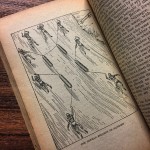 Another small but interesting detail (in terms of the Panerai watches worn by the frogmen of the second and third team) of the well documented attack of the Nijmegen bridges, can be read in the book “The Frogmen” by Waldron & Gleeson, published 1954 and part of our library, on page 119:
Another small but interesting detail (in terms of the Panerai watches worn by the frogmen of the second and third team) of the well documented attack of the Nijmegen bridges, can be read in the book “The Frogmen” by Waldron & Gleeson, published 1954 and part of our library, on page 119:
“The minutes ticked by as the other eight swimmers sat huddled on the bank conversing in low tones, and glancing often at the luminous dials of their underwater watches. When the time came, they put on their oxygen sets and slipped quietly into the water.”

